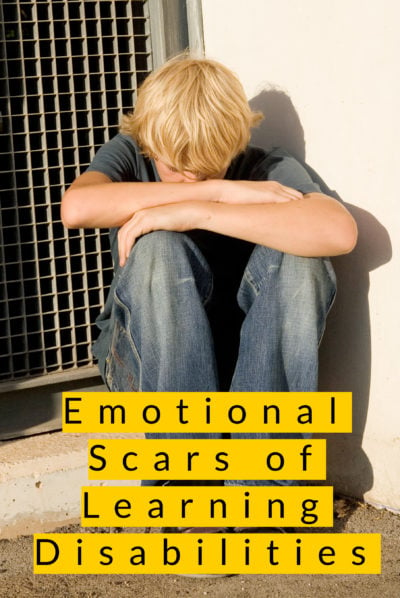 In modern Western society, mastery of basic academic skills — reading, writing, and arithmetic — is a necessary prerequisite for success in both school and employment settings and society at large. A large percentage of children suffer from learning disabilities and therefore don’t master – or only partially master – these required academic skills.
In modern Western society, mastery of basic academic skills — reading, writing, and arithmetic — is a necessary prerequisite for success in both school and employment settings and society at large. A large percentage of children suffer from learning disabilities and therefore don’t master – or only partially master – these required academic skills.
The seriousness of such difficulties is hard to exaggerate. Unless the child’s problem is dealt with adequately, what awaits him outside the school gates is probably nothing but a hopeless future. According to Gerber et al., many adults with learning disabilities are underemployed, often stuck in dead-end jobs that do not tap into their true vocational potential. Many others are not finding employment at all, add Zigmond and Thornton in their article, “The future of learning disabilities.” They are unsuccessful in their pursuit of further training, and few are accessing the adult services that have been developed to serve them. Many learning-disabled young adults have major academic and vocational needs that make it hard for them to live independent lives.
The figures on the salary check, however, might not be the only concern. Learning and reading disabilities can have destructive emotional effects.
Persistent learning failure leads to anguish, embarrassment, and frustration. “There is something terrifying about sitting at the back of the class and having somebody ask you questions which you know you will never be able to answer,” an adult dyslexic told British actress Susan Hampshire, who is also dyslexic.
In describing his feelings about growing up with a learning disability, the late Nelson Rockefeller, who served as vice president of the United States and governor of the state of New York, once recalled: “I was dyslexic, and I still have a hard time reading today. I remember vividly the pain and mortification I felt as a boy of eight when I was assigned to read a short passage of scripture at a community vesper service and did a thoroughly miserable job of it. I know what a dyslexic child goes through… the frustration of not being able to do what other children do easily, the humiliation of being thought not too bright when such is not the case at all.”
Children with learning disabilities experience shame, anxiety, social isolation, sadness, or lack of self-confidence on a daily basis, which create and contribute to a negative self-image and low self-esteem. A survey, conducted by the University of Macedonia at the Aristotle University of Thessaloniki on bullying, showed that students with learning disabilities suffer school bullying at a rate double to ten times the usual due to their degrading school failure. It is, therefore, no wonder that learning-disabled children often present school phobia, and show psychosomatic symptoms such as vomiting, chest pain, and stomachache. Most of these symptoms resolve when the child does not have to go to school, for example, on weekends and during vacations.
For some, the humiliation becomes too much. In one study, Peck found that over 50 percent of all suicides under age fifteen in Los Angeles County had been previously diagnosed with learning disabilities. The actual percentage of youngsters labeled “learning disabled” in most school districts in the United States is below five percent; therefore, it seems clear that youngsters with learning disabilities constitute a disproportionately large percentage of adolescent suicides compared with the general adolescent population.
In a study, conducted in Ontario, Canada, the researchers analyzed all the available suicide notes (n = 27) from 267 consecutive adolescent suicides for spelling and handwriting errors. The results showed that 89 percent of the 27 adolescents who had committed suicide had significant deficits in spelling and handwriting, similar to those of adolescents with learning disabilities.
A study by the University of Toronto found that the lifetime prevalence of suicide attempts was much higher for women who had been diagnosed with learning disabilities (16.6%) compared to women who had not (3.3%). Men with learning disabilities were also more likely to have attempted suicide compared to men without learning disorders (7.7% vs. 2.1%).
Behavior problems resulting from their negative experiences are not uncommon in learning-disabled youngsters. The strain and the frustration of underachieving can cause them to be reluctant to go to school, to throw temper tantrums before school, or in some cases, play truant. Cheating, stealing, and experimenting with drugs can also result when children regard themselves as failures.
Learning disabilities can destroy lives. To get a really disturbing sense of this, we need only to look at the estimates of the learning disabled among juvenile delinquents. Results from a study in the U.S.A. by the National Center for State Courts demonstrated that youths with learning disabilities were 200 percent more likely to be arrested than nondisabled peers for comparable offenses. According to the U.S. Department of Education, 60 percent of America’s prison inmates are illiterate, and 85 percent of all juvenile offenders have reading problems.
Since it brings such devastation to the lives of so many children, no stone may be left unturned to eradicate learning disabilities or learning difficulties. As Richardson states so succinctly, “Literacy gives us the keys to knowledge and wisdom — the keys to the Kingdom. Isn’t it time now for us all to put our heads together, to work together to see to it that those keys are given to every child?”
.
.
Sources:
- Broder, P. K., et al., “Further observations on the link between learning disabilities and juvenile delinquency,” Journal of Educational Psychology, 1981, vol. 73.
- Bryan, T., Sullivan-Burstein, K. & Mathur, S., “The influence of effect on social information processing,” Journal of Learning Disabilities, 1998, vol. 31.
- Fuller-Thomson, E., et al., “Suicide attempts among individuals with specific learning disorders: an underrecognized issue,” Journal of Learning Disabilities, 2017.
- Gresham, F.M. & Reschly, D.J., “Social skill deficits and low peer acceptance of mainstreamed learning disabled children,” Learning Disabilities Quarterly, 1986, vol. 89.
- Hampshire, S., Every Letter Counts: Winning in Life Despite Dyslexia (London: Corgi Books, 1991).
- Hazel, E., McBride, A., & Siegel, L. S., “Learning disabilities and adolescent suicide,” Journal of Learning Disabilities, November 1997, vol. 30.
- Kaval, K.A. & Forness, S.R., “Social skill deficits and LD: A meta-analysis,” Journal of Learning Disabilities, 1996, vol. 29.
- Peck, M., “Crisis intervention treatment with chronically and acutely suicidal adolescents,” in M. Peck, N. L. Farberow, & R. Litman (eds.), Youth Suicide (New York: Springer, 1985).
- Reiff, H. B. & Gerber, P. J., “Adults with learning disabilities,” in N. N. Singh & I. L. Beale (eds.), Learning Disabilities: Nature, Theory, and Treatment (New York: Springer-Verlag, 1992).
- Richardson, S., “Specific developmental dyslexia. Retrospective and prospective views,” Annals of Dyslexia, 1989, vol. 39.
- Rockefeller, N., TV Guide, 16 October 1976, 12-14, cited in J. Lerner, Learning Disabilities: Theories, Diagnosis, and Teaching Strategies (4th ed.), (Boston: Houghton Mifflin Company, 1988).
- Zigmond, N. & Thornton, H. S., “The future of learning disabilities,” in K. A. Kavale (ed.), Learning Disabilities: State of the Art and Practice (Boston: College-Hill Press, 1988).


